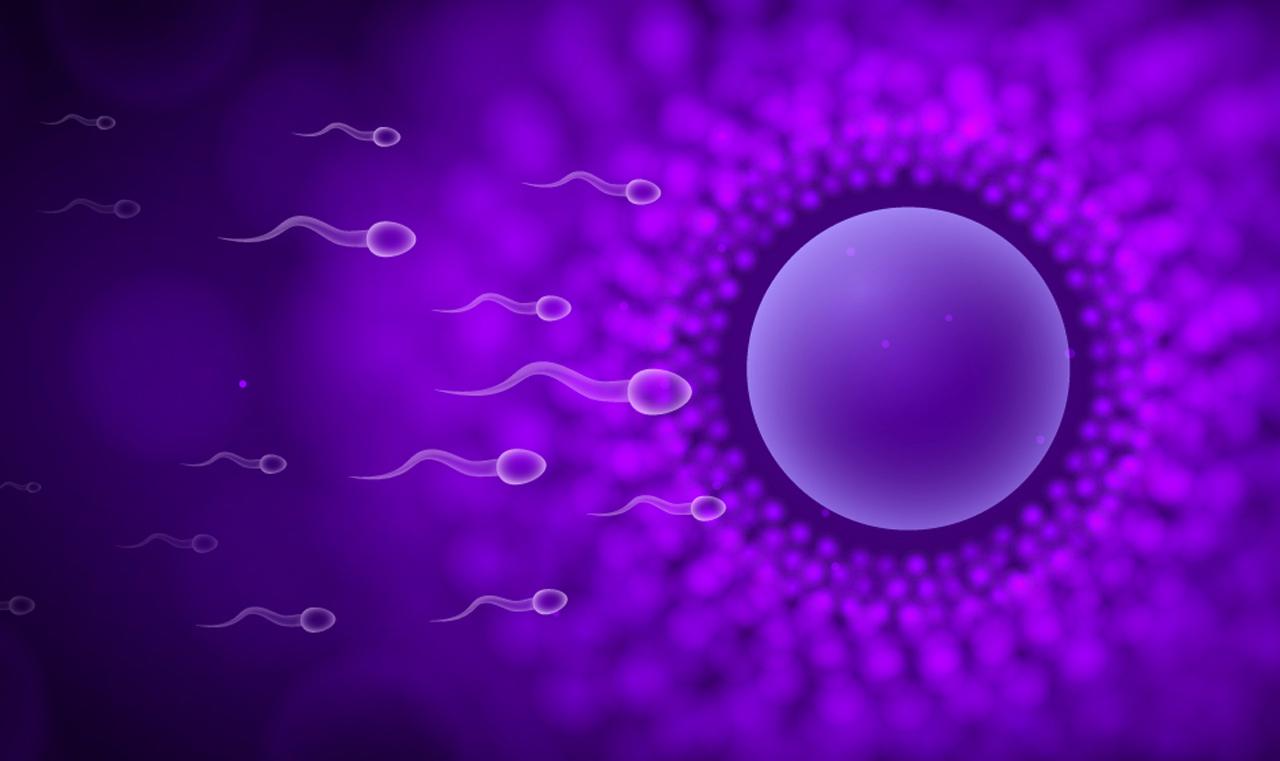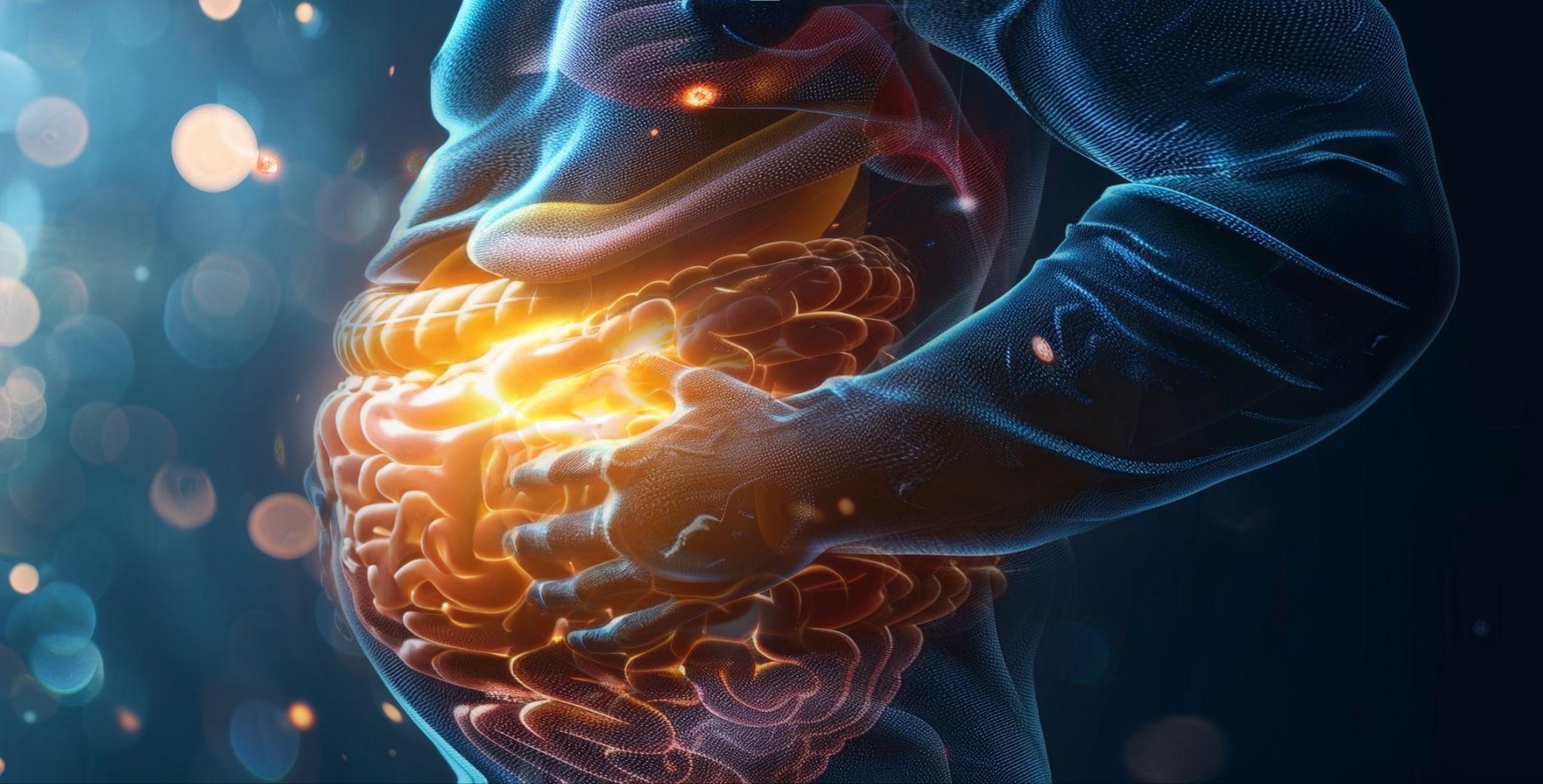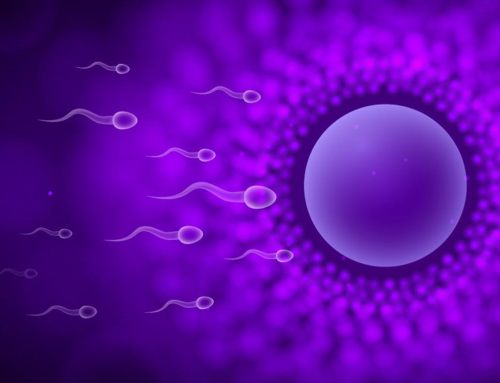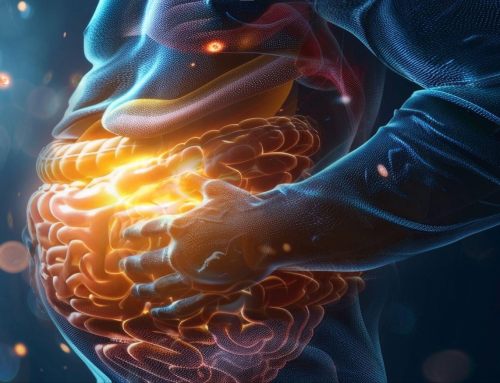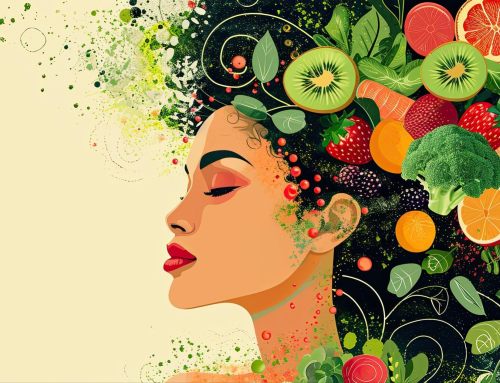Hidden Influencers – An Increasingly Complex Picture of Health
It’s almost fractal in nature. Researchers pushing the boundaries of technological advances get hints of anatomy and physiology that govern or influence how the human body functions. They pursue the “what, how, and why” until the picture becomes clearer.
Facts are teased out, anatomy is identified, functions are described, and theories are forwarded. As time goes by, more and more information is added to the general knowledge base. New hints of anatomy and physiology come forward through the details. Previously hidden influencers are pulled from the bleeding edge into the main core of understanding by being uncovered, tested, and described.
The cycle begins again. As the goalpost of complete understanding moves farther out once again to the bleeding edge, more hidden influencers are revealed, and the complexity of human biology is reaffirmed. What follows are 3 examples of hidden influencers being revealed.
DNA: From Genome to Epigenetics to Imprint Control Regions
Finding and describing DNA sent shockwaves through the science community that still reverberate today. The concept of inheritance had been around since Gregor Mendel described it in the mid-19th century after a well-designed study of pea plants; however, the biological basis was not well understood. In 1869, a Swiss researcher named Friedrich Miescher accidentally discovered “nuclein,” which, in hindsight, turned out to be deoxyribonucleic acid (DNA) (1). It took almost half a century for this discovery to move from the bleeding edge to routine science. In 1944 DNA was forwarded as the “‘transforming principle’ responsible for the existence of specific characteristics in bacteria” (2). DNA was quickly dubbed “the blueprint of life,” providing a map that could be examined. Eventually, DNA was tied to genetic inheritance in humans, cementing its status as an influencer.
However, studying DNA soon revealed that genetic information alone doesn’t influence the plan of growth and development of organisms; rather, it is whatever gets genetically expressed. The mere presence of a certain set of genes did not determine the production of a molecule from the reading of that genetic code. The race was on, looking for any influencers above and beyond the genetic code (“epigenetics”) that could act as a switching mechanism to “turn on” or “turn off” the expression of genes.
Robin Holliday, a molecular biologist, pointed at the relationship of methyl groups to nucleotide bases, suggesting that they could affect the activity of the genes, even suggesting the influence could be heritable. Though it took time, he was validated on both accounts. Histones were shortly identified as another hidden influencer controlling how genes behave (3). While the underlying genome was relatively stable, analogous to hardware, the action of the methyl groups and histones switching genes on and off was similar to a software overlay, allowing real-time changes in response to stimuli. However, what was directing these changes? What was the hidden influencer in this case?
Attention turned to the heritability of characteristics. If indeed the epigenome allowed for real-time responses, did any of those changes make it into germ lines, to be given to the next generation as a permanent hardware change? At what point do the repetition of “software” changes make it into the “hardware,” if at all? These questions were the hints that drove the next lines of scientific inquiry leading to genetic imprinting and the “imprintome.”
Embedded in the genome of mammals (and some plants), are marks that identify genes as coming from the male or female parent. One such mark is the previously mentioned methyl group that can switch genes on and off so that the genetic material of one parent is expressed over the other (“parent-of-origin specific”). These “imprinted genes,” which include the methyl and histone modifications that can regulate the expression of genes, comprise the “imprintome.”
Imprinted genes are heavily involved in fetal development, so while imprinted genes may allow some quick changes, they also represent a weakness; damaged genetic information (genomic or epigenomic) from one parent could negatively affect the whole organism’s development (4). Environmental influences (for example, from the diet or environmental toxins) could exert pressure through this mechanism, resulting in abnormalities. Gene imprinting abnormalities have been linked to diabetes, obesity, schizophrenia, and a wide assortment of cancers (5), and their links to environmental influences are still being studied.
Widening the circle, the search for the hidden influencers of gene imprinting led to the identification and description of “imprint control regions” (ICRs). The hunt for potential ICRs in humans was made easier by the completion of the human genome project and the advancement of whole genome sequencing (WGS), Whole-Genome Bisulfite Sequencing (WGBS), and other -omics disciplines. Currently, a database is being stocked with potential human ICR candidate sites, numbering over 1,480 sites and still growing. Many of these potential ICR sites had been previously suspected as an origin of diseases or syndromes such as Down Syndrome and DiGeorge syndrome (6). There is little doubt that the analyses of potential ICR sites will reveal hints of other influencers to be examined.
The CNS: From One to Three Brains
One could say that the biggest quest for hidden influencers was first answered by establishing that the brain and its connections were supreme controllers of the human body. Ancient Greek philosophers suggested that the brain might be the source of thoughts and functions of the body (7), but it took many years, countless hours of research, and thousands of studies to establish the superiority of the vertebrate brain and its connections for processing external and internal stimuli, coordinating responses, and acting upon various parts of the body.
The brain and spinal cord, with their specialized nerve tissues, began to be called the Central Nervous System (CNS) in the mid-19th century. More and more structures and functions were attributed to the CNS: control of voluntary movements such as speech and walking, control of reflex actions, and involvement in breath, thoughts, and emotions (8). The established functions of the CNS are so numerous even a high-level list by a non-science entity is extremely lengthy.
The Enteric Nervous System (ENS) had been detected as early as the mid-19th century (9), but its full powers and its similarities to the brain in the CNS were not yet understood. We have since found that nearly half a million neurons of the ENS comprise a vast mesh that is embedded directly into the walls of the gastrointestinal tract (GI). It appears as though some brain function was offloaded to this network of neurons as a means of local control for the highly complex function of digestion. As it is gripped by peristalsis, motor-sensory information from the GI tract is fed back to the brain, but the connections are bidirectional. The vagus nerve serves as a large information highway, and roughly 90% of the information is moving afferently from the GI tract to the brain (10). This was the opposite of what was expected, as scientists expected more volume of communication to come from the brain and flow to the ENS if the brain was indeed “controlling” the ENS. Then it was established that the ENS could function completely independent of CNS control (11), and the importance of the ENS began to dawn on the scientific community.
The two pieces of information together – the high input to the brain and yet the ability to function without it – hinted at a larger role of the ENS than previously suspected. As a result of the similarities to the brain and the 2-way communication with the brain, among other things, the ENS began to be called “the second brain” by Dr. Michael Gershon in the late 1990s (12).
The second brain has garnered a lot of attention since its inception. Much ado was made about the “gut feeling,” where a physical feeling emanating from the gut can influence someone to make one decision over another, or warn one of danger. Even before the “second brain” moniker became widely used, the 2-way communication between the brain and the gut was being called the “Gut-Brain Axis” (GBA), as evidence of the gut and the brain each influencing the other became stronger and more established in the research data in the 1980s.
The case for a “third brain” has been built on the back of advanced computing hardware, software, and research techniques. The capacity of computing power and Whole Genome Sequencing (WGS) has propelled the studies of the microorganisms of the gut (called the microbiota) and its genetic material (called the microbiome). Metagenomics, which is the genetic analysis of the microbiome, combined with mass-spectrometry, transcriptomics (the study of RNA transcripts), and metabolomics (the study of metabolites), has provided the means to quantify the microbiota and map out what it is influenced by and how it influences other structures and systems.
As the ENS is embedded into a large part of the gut, it was an easy guess that the gut’s inhabitants, the motley crew of bacteria, viruses, and fungi that make up the microbiota, might exert an influence on it.
In mammals, the gut microbiota develops simultaneously with the GI tract, the CNS, and ENS, likely with each affecting the development of the others. Additionally, nutrients and immune factors in the mother’s milk contribute to the makeup of the microbiota early in development, as well as the diet and environmental factors throughout the life of the host. This almost guarantees a unique microbiota in each individual, which is backed up by some research using metagenomic techniques (13).
The microbiota can directly make metabolites that have hormone-like actions such as Short Chain Fatty Acids (SCFAs), neurotransmitter substances such as serotonin, or gut hormones (14). Indirectly, these microbiota byproducts can interact with and affect immune and inflammatory responses (15). In short, it has been shown that the microbiota can act as a chemical factory that influences the ENS and the CNS.
The repercussions of each individual having a different microbiota hint that this “third brain” acts as both a filter and a permutation factory for chemicals. If there is a lack of a certain type of microorganism in the microbiota (or very low levels), the host may not make certain byproducts (or enough of them) to affect a change in the host. The end result could be less than what the input (the diet, for example) could have been converted to or helped create. The microbiota is acting as a de facto filter or limiting factor in this case.
And yet, the microbiota may also act as a creator of permutations. Since each person’s microbiota is unique, they will make unique combinations of chemical byproducts in unique concentrations and ratios. Now that the microbiota has been revealed as an influencer, the evaluation of an individual’s microbiota paves the way for medicines and treatments that are fantastically tuned to that one unique individual, using it to purposefully influence the brain, the immune system, and other systems in the body.
Neurons: Rise of the Microglia
Surely one of the flashier moments in the early history of biology was making a frog leg contract by stimulating it with electricity. Luigi Galvani figured out an elegant and riveting way to show the electrical properties of nerve conduction in 1791. Anatomists had identified nerves long before that, but it took advances in staining techniques to help identify the nerve cells, called “neurons,” by Santiago Ramon y Cajal and Camillo Golgi (16). Golgi provided the staining technique necessary to see neurons. Cajal used the staining technique and quickly began describing the morphology of neurons of the cerebellum and the retina (17).
In those days, glia were just the supporting cells to neurons, some supportive tissue that appeared to hold neurons to each other. In 1859 Rudolf Virchow coined the term “nerve-glue” to describe them, which has been translated to “neuroglia (18).” Cajal and Golgi investigated glia in the early 19th century as well. Golgi was able to distinguish glial cells from neurons visually and made some descriptions (19). Cajal thought glial cells just provided insulation for neurons, guiding nerve impulses along neuronal circuits (20).
Although their roles varied by cell type, and they outnumbered neurons, there was no indication that glia went above and beyond cleaning out dead debris by phagocytosis, providing cushion around axons of neurons, acting as structural support, and regulating nutrients.
However, as scientific techniques advanced, evidence began to mount that glia were more than just support and good housekeepers. Glia were shown to transmit to and receive information from both each other and neurons, using chemical signals. They were seen to affect the direction of growth of neurons during neuronal development, acting as scaffolding. Research showed that glia could also affect the number of neuronal synapses and how efficient they were (21).
With the information already found about the six different types of glia, their roles as once-hidden influencers were already being cemented. Yet another remarkable discovery was about to turn everything on its head. One of the types of glia called microglia was so important to brain health that an intentionally caused mutation in the development of microglia resulted in the observation of excessive grooming in mice. Excessive grooming in mice is akin to Obsessive Compulsive Disorder (OCD) in humans. Essentially this change in microglia affected a high-order behavior (22)!
Affecting behavior of the whole organism was a completely new role for a glial cell. Microglia normally act as immune cells in the brain. They detect when something out of the ordinary has occurred, and coordinate action to deal with the situation, such as the presence of toxins or the deaths of cells. They engage in phagocytosis and clear up debris from dead neurons. The evidence that microglia could affect high-order behavior created a flurry of studies to determine the influence they might have on behaviors, diseases, and cognitive disorders.
One area of microglial study that garnered a lot of attention was that of “microglial activation.” Microglia have a role in helping the brain recover from trauma, and mediate the inflammatory response. They are activated to produce inflammation when trauma occurs. Unfortunately, brain inflammation has been associated with many neurodegenerative diseases. Efforts have been made to suppress inflammation caused by microglia during these disease states to determine health outcomes, using medications to varying degrees of success (23). Another line of inquiry has been the length of time of microglial activation. While temporary microglial activation may have a specific benefit, chronic microglial activation appears to cause destruction by releasing cytotoxic and pro-inflammatory chemicals, greatly exacerbating damage to neurons (23). With the amount of attention in this area, there is no doubt that more hidden influences will catch the eye of an attentive researcher.
Winning the Game of Hide and Seek
The question of “what is influencing this?” seems to be an ever-giving font for researchers. Hidden influencers seem to be everywhere in the human body, agents of change even embedded within other agents of change. Finding those influencers seems to be only a matter of interest, time, and the right tools. With the multi-discipline research of the -omics, strong computing power, and large databases, hidden influencers will not remain in the shadows for long.
Learn more about these exciting ideas at our 10th Annual Thought Leaders Consortium. Speakers will include experts in clinical care and those leading research discoveries. This year’s distinguished faculty is composed of pioneers and leaders in the development of fields of discovery that include the microbiome, environmental epigenetics, functional immunology, biological aging, and the role of lifestyle, diet, and specific nutrients in managing clinical conditions associated with chronic immune-related issues.
We invite you to click the links to register for the Virtual Livestream or to attend in person.
Sources:
- Admin. (2015, September 30). The history of DNA timeline. DNA Worldwide. Retrieved August 26, 2022, from https://www.dna-worldwide.com/resource/160/history-dna-timeline
- Gnn – genetics and genomics timeline. GNN – Genome News Network. (n.d.). Retrieved August 26, 2022
- Haig, D. (2011, December 20). Commentary: The Epidemiology of Epigenetics. OUP Academic. Retrieved August 26, 2022
- Falls, J. G., Pulford, D. J., Wylie, A. A., & Jirtle, R. L. (1999, March 1). Genomic imprinting: Implications for human disease. The American Journal of Pathology. Retrieved August 26, 2022, from https://ajp.amjpathol.org/article/S0002-9440(10)65309-6/fulltext
- Geneimprint. (n.d.). Retrieved August 26, 2022, from https://www.geneimprint.com/site/what-is-imprinting
- Geneimprint. (n.d.). Retrieved August 27, 2022, from https://www.geneimprint.com/site/home
- Understanding the brain: A brief history. Queensland Brain Institute – University of Queensland. (2019, January 30). Retrieved August 27, 2022, from https://qbi.uq.edu.au/brain/intelligent-machines/understanding-brain-brief-history
- Encyclopædia Britannica, inc. (n.d.). Central Nervous System. Encyclopædia Britannica. Retrieved August 27, 2022, from https://www.britannica.com/science/central-nervous-system
- Fleming, M. A., Ehsan, L., Moore, S. R., & Levin, D. E. (2020, September 8). The enteric nervous system and its emerging role as a therapeutic target. Gastroenterology Research and Practice. Retrieved August 27, 2022
- Hadhazy, A. (2010, February 12). Think twice: How the gut’s “Second brain” influences mood and well-being. Scientific American. Retrieved August 27, 2022, from https://www.scientificamerican.com/article/gut-second-brain/
- Fleming, M. A., Ehsan, L., Moore, S. R., & Levin, D. E. (2020, September 8). The enteric nervous system and its emerging role as a therapeutic target. Gastroenterology Research and Practice. Retrieved August 27, 2022
- Gershon MD. The enteric nervous system: a second brain. Hosp Pract (1995). 1999 Jul 15;34(7):31-2, 35-8, 41-2 passim. doi: 10.3810/hp.1999.07.153. PMID: 10418549.
- Franzosa, E. A., Huang, K., Meadow, J. F., Gevers, D., Lemon, K. P., Bohannan, B. J., & Huttenhower, C. (2015). Identifying personal microbiomes using metagenomic codes. Proceedings of the National Academy of Sciences, 112(22). https://doi.org/10.1073/pnas.1423854112
- Cussotto, S., Sandhu, K. V., Dinan, T. G., & Cryan, J. F. (2018, May 10). The neuroendocrinology of the microbiota-gut-brain axis: A behavioural perspective. Frontiers in Neuroendocrinology. Retrieved August 27, 2022
- Cussotto, S., Sandhu, K. V., Dinan, T. G., & Cryan, J. F. (2018, May 10). The neuroendocrinology of the microbiota-gut-brain axis: A behavioural perspective. Frontiers in Neuroendocrinology. Retrieved August 27, 2022
- Understanding the brain: A brief history. Queensland Brain Institute – University of Queensland. (2019, January 30). Retrieved August 28, 2022, from https://qbi.uq.edu.au/brain/intelligent-machines/understanding-brain-brief-history
- Glickstein, M. (2006, March 7). Golgi and Cajal: The neuron doctrine and the 100th anniversary of the 1906 Nobel prize. Current Biology. Retrieved August 28, 2022, from https://www.cell.com/current-biology/fulltext/S0960-9822(06)01203-6
- Erdogan, A. (2018, October 25). Neuro Primer: Glia. Knowing Neurons. Retrieved August 28, 2022, from https://knowingneurons.com/neuro-primer-glia/
- Bentivoglio, M., Cotrufo, T., Ferrari, S., Tesoriero, C., Mariotto, S., Bertini, G., Berzero, A., & Mazzarello, P. (1AD, January 1). The original histological slides of Camillo Golgi and his discoveries on neuronal structure. Frontiers. Retrieved August 28, 2022
- Garcia-Segura, L. M. (2004, January 7). Chapter 19 Cajal and glial cells. Progress in Brain Research. Retrieved August 28, 2022
- Stevens, B. (2003, June 17). Glia: Much more than the neuron’s side-kick. Current Biology. Retrieved August 28, 2022, from https://www.cell.com/current-biology/fulltext/S0960-9822(03)00404-4
- Tränkner, D., Boulet, A., Peden, E., Focht, R., Deren, D. V., & Capecchi, M. (2019, October 22). A microglia sublineage protects from sex-linked anxiety symptoms and obsessive compulsion. Cell Reports. Retrieved August 28, 2022, from https://www.cell.com/cell-reports/fulltext/S2211-1247(19)31233-1
- EA;, D. S. T. K. C. L. (n.d.). Microglial activation and its implications in the brain diseases. Current medicinal chemistry. Retrieved August 28, 2022, from https://pubmed.ncbi.nlm.nih.gov/17504139/


